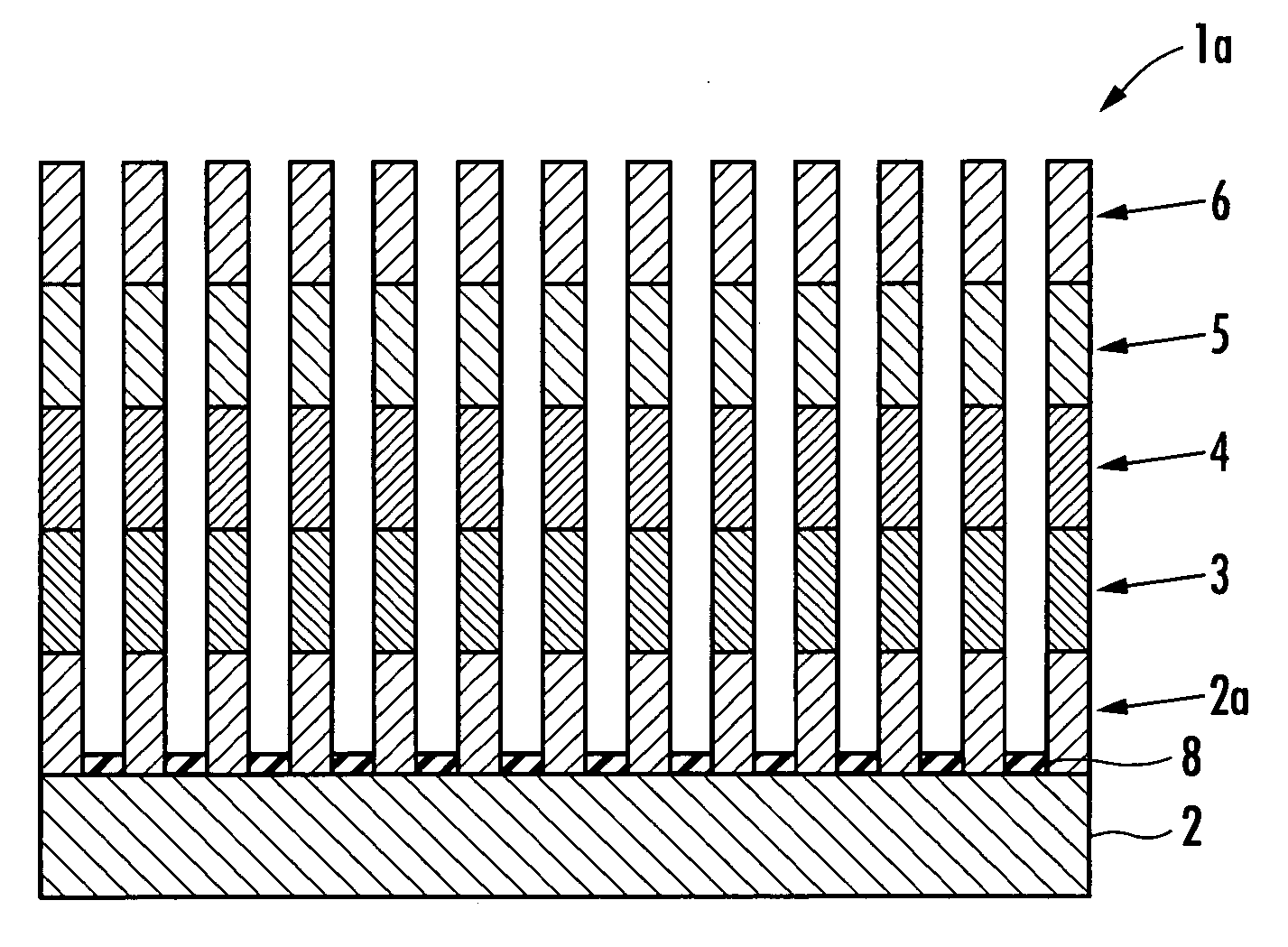Method for producing multijunction solar cell
a solar cell and multi-junction technology, applied in the direction of semiconductor/solid-state device manufacturing, electrical apparatus, semiconductor devices, etc., can solve the problems of reducing crystal quality, and achieve the effect of increasing the area of the devi
- Summary
- Abstract
- Description
- Claims
- Application Information
AI Technical Summary
Benefits of technology
Problems solved by technology
Method used
Image
Examples
Embodiment Construction
[0039]Next, the embodiments of the present invention will be described in more detail with reference to the attached drawings.
[0040]As shown in FIG. 1, a multifunction solar cell 1a obtained by the production method of the present embodiment comprises a substrate 2, a first semiconductor 2a grown in the shape of a wire on the substrate 2, a second semiconductor 3 which is connected to an end located farther from the substrate 2 of the first semiconductor 2a and is grown in the shape of a wire, a third semiconductor 4 which is connected to an end located farther from the substrate 2 of the second semiconductor 3 and is grown in the shape of a wire, a fourth semiconductor 5 which is connected to an end located farther from the substrate 2 of the third semiconductor 4 and is grown in the shape of a wire, and a fifth semiconductor 6 which is connected to an end located farther from the substrate 2 of the fourth semiconductor 5 and is grown in the shape of a wire. In the multijunction so...
PUM
 Login to View More
Login to View More Abstract
Description
Claims
Application Information
 Login to View More
Login to View More - R&D
- Intellectual Property
- Life Sciences
- Materials
- Tech Scout
- Unparalleled Data Quality
- Higher Quality Content
- 60% Fewer Hallucinations
Browse by: Latest US Patents, China's latest patents, Technical Efficacy Thesaurus, Application Domain, Technology Topic, Popular Technical Reports.
© 2025 PatSnap. All rights reserved.Legal|Privacy policy|Modern Slavery Act Transparency Statement|Sitemap|About US| Contact US: help@patsnap.com



